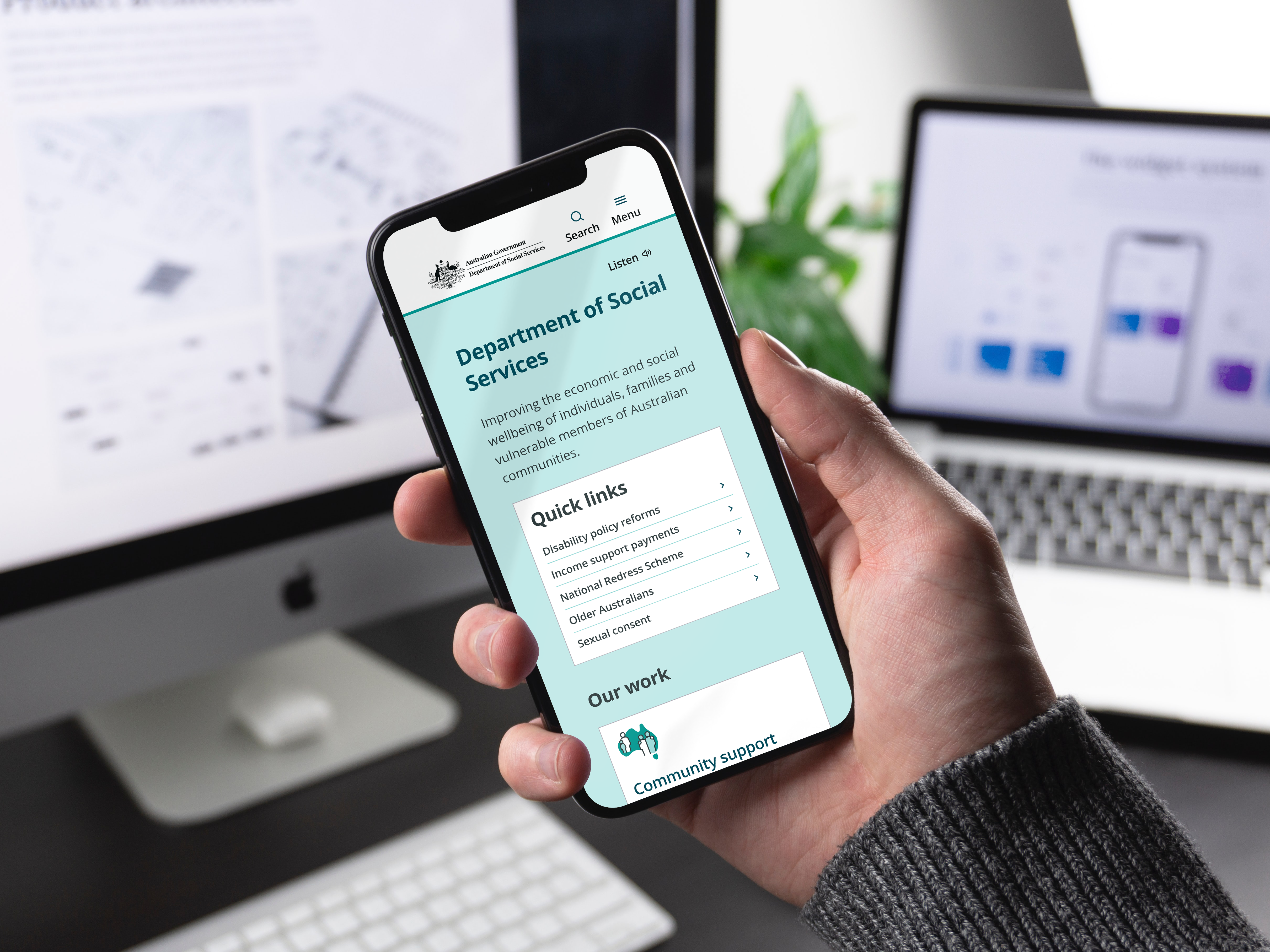news
In digital government, trust is built (or lost) one click at a time
Trust in government digital services isn't just about whether they work. It's also about whether they feel right.

Millie Clery
Digital Experience Lead
Trust in government digital services isn't just about whether they work. It's also about whether they feel right.

Millie Clery
Digital Experience Lead

Published: 19 June 2025
People come to government websites with a task to complete – but also with expectations, doubts and assumptions. These are shaped by personal experiences, past frustrations, and long-held perceptions of government, and these feelings are outside the control of any single product team.
But that doesn’t mean they can be ignored.
In fact, acknowledging them is the starting point for good digital work.
“You can’t control what a user brings with them – but you can control how your service makes them feel once they’re there”, says Millie Clery, our head of Digital Experience.
Trust is emotional before it’s functional.
Trust is often talked about like it’s earned through compliance or uptime. But users rarely read legislation, privacy policies or assess platform stability. They judge trust through signals. These signals are fast, subtle, and deeply human: clarity, calmness, predictability, inclusion, respect.
In government, trust means:
That’s why trust can’t just be a side-effect of usability. It needs to be designed in — from the very first click.
We’ve seen this time and again: if a government site strays too far from what people are used to – if it’s overly stylised, unclear, or doesn’t display the crest – users hesitate. This isn’t about design conservatism. It’s about Jakob’s Law: people expect your site to look and work like the others they already use.
When it doesn’t, something feels off. Is this real? Is this safe? And even if they push through, that wobble in trust stays with them.
“This is why I see real value in government re-investing in a standardised design system. One that provides consistency in core navigational and content display components”, says Millie.
“When these patterns are familiar, users don’t have to relearn how to move through a site. It reduces effort, friction and doubt.”
“But consistency doesn’t have to mean uniformity. The opportunity is to strike the balance. Give agencies space to apply their brand in ways that are relevant for their audience, while still maintaining a baseline of familiarity that helps users feel confident and in control.”
Standardisation, done well, isn’t about sameness. It’s about creating a shared visual and functional language that quietly reinforces trust, every time a user interacts with a government service.
One of the biggest risks in government digital design is misinterpreting what “engaging” design means for their specific users. We’ve seen this clearly with services related to mental health, disability, aged care, and domestic violence. In these cases, trust is built by showing emotional intelligence — using tone, colour, layout and language to signal safety and seriousness. Getting this part wrong can have a deeper lasting impression on users that goes beyond the feeling that government doesn’t understand them – it can feel like disrespect.
Brand, in this context, isn’t just about being on-message. It’s about being on-emotion.
Trust is built through frictionless, respectful, consistent experiences. Over the many years our team has spent designing for some of Australia’s most significant government services, we’ve learned the following ingredients are critical to getting these experiences right:
A site can be beautifully designed and still lose trust over time if it’s left to decay.
That’s why post-launch work matters: strong content governance, regular updates, clear feedback loops and meaningful iteration. Nothing erodes trust faster than out-of-date information or a broken form. And nothing builds it like visible responsiveness and care.
People don’t come to government services for delight. They come for certainty. Reassurance. Help. Clarity. That’s what trust looks like online.
And when a service feels right – when it’s familiar, calm, inclusive and respectful – people believe in it. And that belief is what every government digital team is really designing for.
At Jude, we help government teams deliver digital services that feel clear, inclusive and confidently official – helping agencies earn trust through good design and better decisions.
Let’s chat!